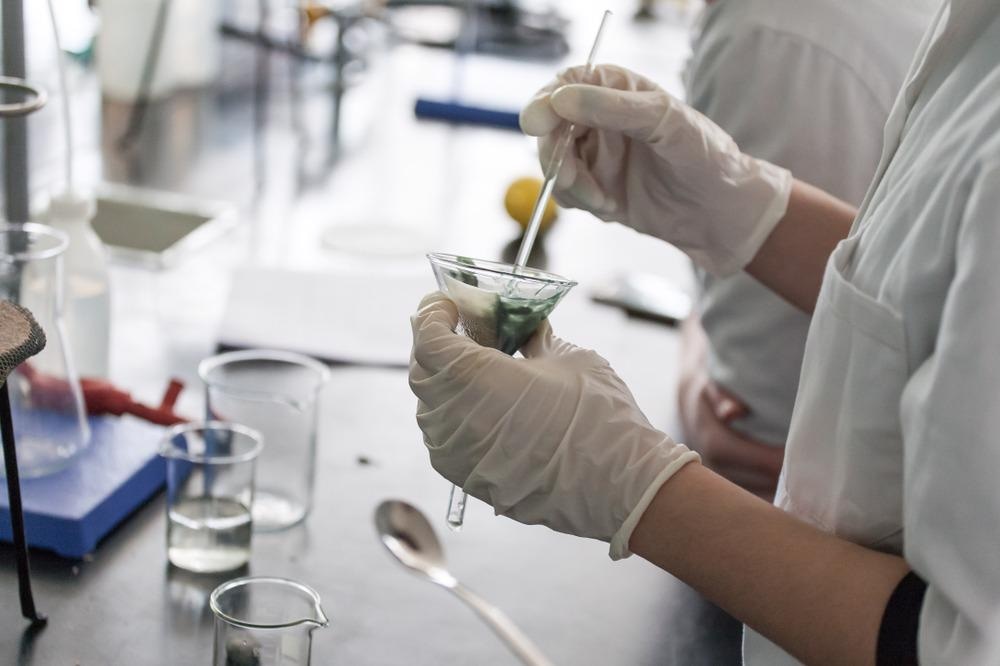Plastic pollution is a key environmental issue facing humankind, and current recycling strategies are falling far short of where they should be. To create a truly sustainable alternative, researchers writing in the Journal of the American Chemical Society have investigated the use of DNA and isopolymers derived from biomass for bioplastics.

Study: Sustainable Bioplastic Made from Biomass DNA and Ionomers. Image Credit: GB Traveler/Shutterstock.com
The Scale of Plastic Waste
Plastics are an important material in modern society. However, they come with a huge cost. Plastics are commonly made from petrochemicals and their manufacture contributes significantly to carbon emissions and climate change, as well as being energy-intensive and creating toxic byproducts. Additionally, they can take hundreds of years to degrade.
Disposing them at the end of their lives poses a significant challenge. Between 51 and 88 million tons of plastic waste enters the environment annually, and this quantity is increasing. Common disposal methods are landfilling and incineration, but this is insufficient. Also, these methods lead to toxic environmental pollution. Plastic waste enters the ocean, leading to damage of vital ecosystems, loss of biodiversity, and furthermore, microplastics can enter the food chain.
Recycling plastic waste helps to alleviate the issues, but recycling strategies are still woefully inadequate. Therefore, alternatives to traditional plastics are required to improve the sustainability and eco-friendliness of the plastics industry.
Bioplastics
Bioplastics are a proposed solution, and much research has been carried out into their manufacture. Developing truly sustainable bioplastics will, in the long run, reduce dependency on fossil fuels and help create a sustainable society based on the principles of green engineering and chemistry.
Bioplastics are manufactured from a wide range of biomass. Promising bioderived raw materials include cellulose, chitosan, plant oil, proteins, and starch. Whilst these are more sustainable than petrochemical-derived plastic products, there are several key issues with them. For one, the production, use, and end-of-life options for bioplastics derived from these natural products do not strictly follow the principles of green engineering and chemistry.
Secondly, many of these materials are derived from crops, meaning that they compete with food production for resources. Land used to grow food is given over to industrial production. Additionally, even though they exhibit enhanced biodegradability, there are still issues with recycling and reusing them after the end of their life. This leads to significant levels of resource waste.
Furthermore, whilst recycling saves resources, the current processes are inadequate, using high temperature, strong acid/alkali conditions, and catalysts that generate reactive species, which can lead to decreased mechanical properties and quality of recycled plastics.
Using DNA and Isopolymers for Improved Bioplastics
DNA has emerged as a class of functional nanomaterials in recent years and has been used to synthesize polymeric materials such as DNA nanoparticles, hydrogels, and dendrimer-like DNA structures. DNA has the added advantage of being effectively inexhaustible, with 50 billion tons estimated to exist on Earth currently. DNA can be extracted from all organisms such as plants, animals, and microbes. Producing bioplastics from DNA would, in theory, meet the total global demand for plastics.
Conic: Replacing Plastics with a Wood-Based Formable Packaging Solution
Research presented in JCAS has demonstrated using DNA and isopolymers to create sustainable bioplastics that do not require energy-intensive production methods. There are some major advantages to this alternative approach.
Firstly, the raw materials for bioplastic production are derived from biorenewable resources. Secondly, the processing approaches are environmentally friendly. Additionally, the service lifetime of DNA-derived bioplastics is prolonged by achieving renewable and non-destructive use. Furthermore, they are easy to dispose at the end of their life by either being recycled or degraded under mild conditions by a controlled enzymatic process. These are both green routes.
The process laid forth in the research involved freeze-drying of cross-linked DNA hydrogels to create DNA bioplastics. Elastomeric ionomers, which were synthesized by introducing ionic groups into elastomers, were utilized as macromolecular cross-linkers to prepare the DNA gels. In the experiment, salmon sperm DNA was used, and the elastomeric ionomers mediated its assembly to form 3D networks.
The team demonstrated these novel DNA bioplastics by constructing a DNA double helix, which was stained with a DNA-specific fluorescent dye that confirmed the plastic was composed of DNA. To process the DNA plastics into 3D structures, a water-triggered molecular assembly process was developed by the team. They successfully fabricated a plastic cup with this process, further demonstrating the potential of both the process and materials.
The Future
The scale of plastic waste is staggering, and the plastic industry’s carbon footprint needs to be urgently addressed. Bioplastics can help overcome the industry’s woes, and research into DNA bioplastics could create a truly sustainable version of bioplastics that is firmly rooted in the principles of green chemistry and engineering.
Further Reading
Han, J et al. (2021) Sustainable Bioplastic Made from Biomass DNA and Ionomers [online] JCAS | pubs.acs.org. Available at: https://pubs.acs.org/doi/abs/10.1021/jacs.1c08888
Disclaimer: The views expressed here are those of the author expressed in their private capacity and do not necessarily represent the views of AZoM.com Limited T/A AZoNetwork the owner and operator of this website. This disclaimer forms part of the Terms and conditions of use of this website.